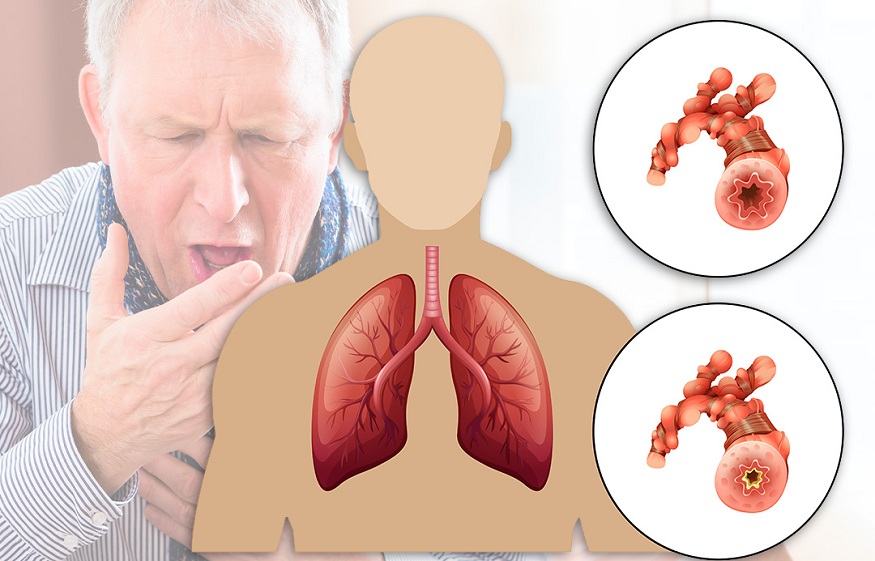Obstructive Pulmonary Disease, Its Symptoms And Causes?
Obstructive pulmonary diseases refer to inflammatory lung diseases that lead to obstructed airflow from the region of your lungs. Symptoms include the production of mucus (sputum), issues of breathing, wheezing, and cough.
Long-term exposure to particulate matter or irritating gases causes chronic obstructive pulmonary diseases (COPD). It is most often caused by smoking cigarettes. People who have COPD are vulnerable to develop lung cancer, heart diseases, and various other medical conditions.
Chronic bronchitis and emphysema are the common conditions that contribute to the symptoms of COPD. These two conditions occur at the same time and vary in severity in people with COPD.
Chronic bronchitis refers to the inflammation in the bronchial tube lining which works to carry air to and from the air sacs (alveoli) of your lungs. Mucus production and daily cough are the symptoms of chronic bronchitis.
A condition in your alveoli at the smallest air passages (bronchioles) end is destroyed due to the damaging exposure to the smoke of cigarettes and other gases and particulate matter that are irritating is called emphysema. COPD is a progressive disease.
This disease becomes worse with the duration of time. It is a treatable condition. Most people who have COPD successfully control their symptoms and quality of life with proper management. It reduces the risk of developing other associated conditions.
Symptoms
The symptoms of COPD usually appear after the significant damage of lungs and they worsen with the duration of time. Persistent smoking exposure can also make the symptoms of the obstructive pulmonary disease worse.
Symptoms of COPD are:
- Breath shortness
- Chest tightness
- Wheezing
- Lack of energy
- Chronic cough in which individual produces mucus (sputum) that is yellow, white, greenish, or clear
- Unintended loss of weight
- Ankle, feet, and leads swelling
People with this disease sometimes experience episodes that are called exacerbations. In these episodes, symptoms become worse than normal day-to-day variations. These symptoms persist for many days. If treatment is not proving effective for you then talk to your doctor.
Discuss your symptoms with the doctor if they are getting worse. If you notice you are having the symptoms of certain infections such as a change in sputum or fever then immediately go to visit your doctor and seek medical care.
Medical care is also necessary if you are unable to catch your breath and if you experienced chronic blueness of fingernail beds (cyanosis) and lips. You should also visit a doctor in case of a rapid heartbeat and if you have issues of concentration with foggy feelings.
Causes
Tobacco smoking is the leading cause of COPD in many developed countries. It occurs in people who have been exposed to fumes from burning fuel. Poorly ventilated homes can also cause this disease in people. Some chronic smokers may suffer clinically apparent COPD.
Many smokers who have a long history of smoking can experience reduced lung function. Some develop the conditions of lungs that are less common. They can also be misdiagnosed as having the symptoms of COPD until doctors perform more thorough examinations.
How COPD Affects Your Lungs?
Air travels down the human windpipe or trachea into the area of the lungs with the help of two large tubes. These tubes are called bronchi. Inside the area of your lungs, these tubes become divided several times into smaller tubes called bronchioles.
Bronchi are divided just like tree branches. Bronchioles end in tiny air sacs clusters that are called alveoli. Walls of air sacs are thin that have many blood vessels called capillaries. The oxygen you inhale from the air passes into the blood vessels and then starts entering your bloodstream.
Carbon dioxide is the waste product gas of metabolism that is exhaled at the same time. Lungs are dependent on the natural elasticity of air sacs and bronchial tubes to force the flow of air outside your body. COPD causes your air to expand by losing its elasticity.
It leaves some trapped air in the area of your lungs during the process of exhalation. Airway obstruction causes are given below.
Emphysema
It is a lung disease that causes the destruction of the elastic fibers and fragile walls of the alveoli. When you exhale, the small airways start collapsing and impair the airflow out of the area of your lungs.
Chronic Bronchitis
Human bronchial tubes start becoming narrowed and inflamed in this condition. That’s why your lungs produce a greater amount of mucus. This mucus can block the tubes that are narrowed. It leads to the development of chronic cough.

